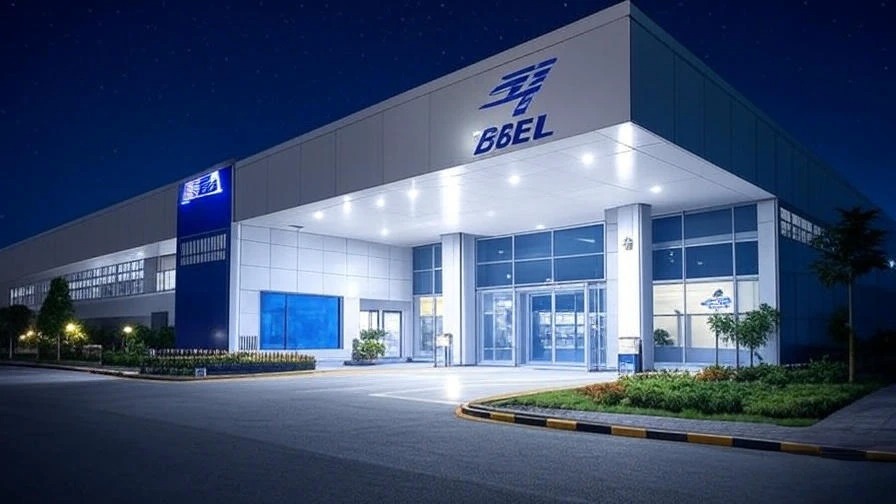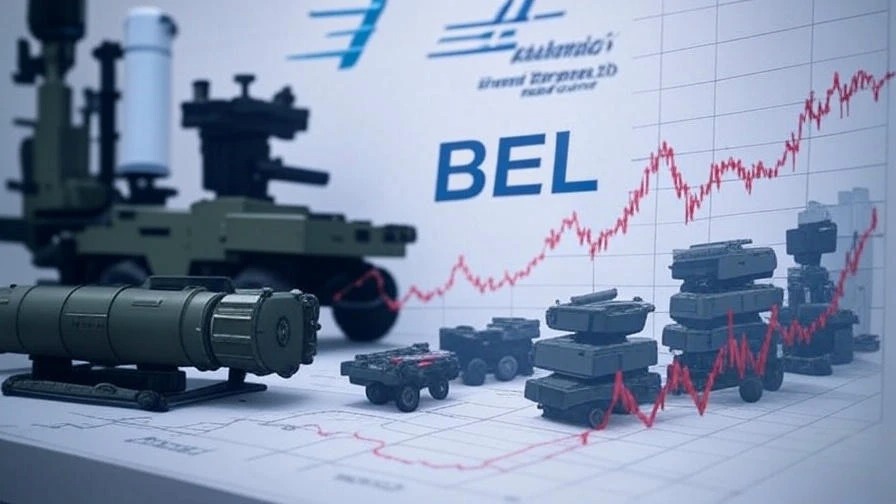The Indian stock market has witnessed some remarkable stories over the years, but few capture attention quite like Bharat Electronics Ltd (BEL). This defence PSU has been defying gravity, continuing its stellar run even as smart money appears to be booking profits. The question on every investor’s mind: Is this momentum sustainable, or are we witnessing a classic case of euphoria before a fall?
The Numbers That Tell a Story
BEL’s recent performance reads like a fairy tale for long-term investors. The stock has delivered an eye-watering 1,536% return over five years – turning every ₹1 lakh investment into ₹16.36 lakhs. Even in the shorter term, the momentum remains impressive with a 21% gain in just the past month and a hefty 41% surge over three months.
On June 13, 2025, BEL shares closed at ₹394.30, up 1.83% from the previous session. The stock has been flirting with its 52-week highs, demonstrating consistent buying interest despite stretched valuations.
But here’s where it gets interesting – and perhaps concerning for some investors.

The Curious Case of Nippon India’s Exit
While retail investors continue to chase BEL shares higher, Nippon India Mutual Fund has been quietly reducing its position. Between March 2020 and June 2025, the fund house sold over 5 lakh shares, reducing its stake from 3.16% to 3.15%.
This might seem minor in percentage terms, but it raises an important question: Why is sophisticated institutional money moving away from a stock that’s delivering such spectacular returns?
The answer isn’t necessarily bearish. Mutual funds often rebalance portfolios when positions become too large, or they might be booking profits after exceptional gains. However, it does serve as a reminder that even the best-performing stocks can face selling pressure.

The Fundamentals Behind the Frenzy
BEL’s financial performance provides solid backing for its stock price rally. The company reported a turnover of ₹23,024 crore in FY25, marking a robust 16.17% growth. The fourth quarter was particularly strong, with revenue from operations reaching ₹9,119 crore.
What’s more impressive is the profitability. Net profit surged to ₹2,127 crore in Q4 FY25, while EBITDA margins remained healthy at 30.8%. These aren’t just vanity metrics – they reflect a company that’s genuinely growing its business and maintaining pricing power.
The order book tells an even more compelling story. Standing at ₹71,650 crore as of April 2025, it provides strong revenue visibility for years ahead. For a company with annual revenues of around ₹23,000 crore, this represents more than three years of current business locked in.

Management’s Ambitious Vision
BEL’s management isn’t resting on past laurels. They’re targeting 15% revenue growth in FY26 and planning to increase annual investments to over ₹1,000 crore from ₹900 crore in FY24. The five-year roadmap is even more ambitious – aiming for 15-17.5% revenue CAGR and over 20% PAT growth.
The company is also expanding its footprint beyond traditional defence. Smart cities, cyber security, solar energy, and medical electronics are becoming meaningful revenue contributors. This diversification reduces dependence on defence spending cycles and opens new growth avenues.

The Defence Sector Tailwinds
India’s defence modernization drive provides a strong structural tailwind for BEL. The government’s push for self-reliance through ‘Make in India’ initiatives directly benefits companies like BEL that have established manufacturing capabilities and R&D expertise.
Rising geopolitical tensions have also increased focus on defence preparedness, leading to higher budget allocations. BEL, being a trusted partner of the armed forces with 70+ years of experience, remains well-positioned to capture this opportunity.

The Valuation Reality Check
Here’s where investors need to pause and think. While BEL’s P/E ratio of 53 is lower than the industry average of 87, it’s still significantly higher than broader market averages. The stock is clearly pricing in a lot of future growth.
For context, the company’s market capitalization has grown much faster than its earnings over the past two years. This suggests that while the business fundamentals remain strong, the stock might be ahead of itself in terms of valuation.
The Risks Worth Considering
No stock story is complete without acknowledging the risks. BEL faces several challenges:
Government Dependency: Despite diversification efforts, government orders still drive the majority of revenues. Any slowdown in defence spending or delays in order execution could impact growth.
Execution Risk: The ambitious growth targets require flawless execution. Delays in new factory setups or cost overruns could hurt margins and investor confidence.
Competition: Private sector companies are increasingly participating in defence contracts, potentially challenging BEL’s market share.
Valuation Risk: At current prices, the stock offers little margin of safety. Any disappointment in quarterly results or order inflows could trigger sharp corrections.

The Verdict: Proceed with Caution
BEL represents a fascinating case study of a traditional PSU successfully reinventing itself for the modern era. The fundamentals are undeniably strong, management appears competent, and the sector dynamics remain favorable.
However, the stock’s meteoric rise has left little room for error. New investors entering at current levels are essentially betting on perfect execution of the management’s ambitious plans.
For existing shareholders, the Nippon India stake sale serves as a reminder that profit booking isn’t always a bad strategy, especially after extraordinary gains.
The key lesson? Great companies don’t always make great investments at any price. BEL might continue its upward journey, but investors should be prepared for potential volatility and consider position sizing carefully.

Disclaimer: This analysis is for informational purposes only and should not be construed as investment advice. Stock investing involves substantial risk of loss and may not be suitable for all investors. Past performance does not guarantee future results. Readers are advised to consult with qualified financial advisors and conduct their own research before making investment decisions. The author may or may not hold positions in the stocks discussed.






